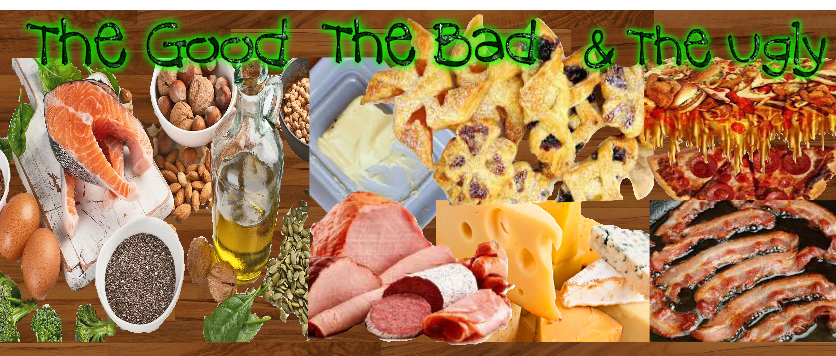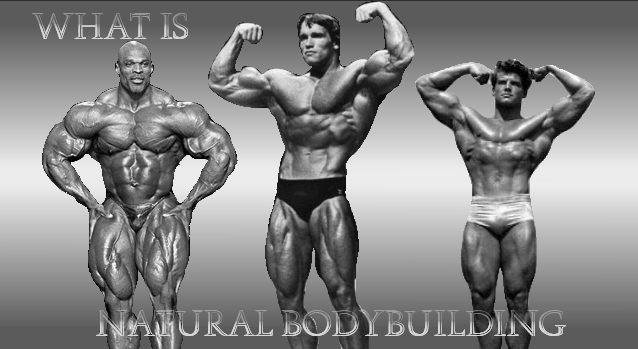Women's Weight Training Fat Loss Strategies

Weight training fat loss?... depending on who you ask, whether it's a sports medical doctor, athlete, personal trainer or nutritional dietitians; fat loss seems to always be shrouded in an enigma of different opinions...
With thousands of magazine articles and books that have been written on the subject.
Each person’s expertise in their field will have an opinion to varying degrees, of how to approach weight training for fat loss.
This article goes into the 3 different Main components that are important to build and maintain a more athletic physique and healthier lifestyle, so… let’s look closer at identifying the question and finding some answers!
What's The Difference Fat or Weight loss?
Understanding the context of the question, surrounding (weight loss)? Most people want to achieve overall weight loss, meaning: the loss of fat or (adipose tissue).
For women. The overall main goal should be focused on fat loss, not the loss of lean muscle tissue. Lean tissue is AKA (active tissue), this you want to keep.
Along with the brain, central nervous system and lean muscle tissue are the biggest contributors and the most responsible for calorie consumption.
Note: always check with your family Dr. or health care physician before you embark on any fitness, or nutritional diet adventure or lifestyle change to have a healthy recommend positive direction.
So how is this achieved?
In reality, weight training fat loss is simpler to attain than most might think, you need to have 3 simple; but important components brought into the fat loss equation:
o Weight training – is going to strengthen, build bone and muscle, producing positive effects, such as:
o Increasing muscle strength, (increases athletic body-shape and muscle tone, stronger, toned muscles increase your fat burning furnace/metabolism).
o low impact aerobics are performed to increase cardio and pulmonary health, strengthen the lungs, heart and vessels. Aerobics also increase the bodies core temperature, which burns extra calories as you’re performing them.
o The final component to these three that most people miss the importance of is: (65% of how you look is decided by... What you put into your mouth).
That’s right, 65 to 70% of the underlying weight training fat loss question of what works best is, nutrition: there you have it, that’s how big of a deal nutrition really is! That’s a huge slice out of the fat loss Pie.
Weight training, low impact cardio, nutrition?
So... how do you go about incorporating all three? It’s easier than you might think. And this article is going to help take a lot of guesswork out of it for you.
If you can; try to keep to abide by one important rule:
The maintenance of increasing bone density and muscle mass (active tissue), should take precedence over the loss of body fat.
Why? as mentioned the muscles and central nervous system need calories: muscle activity is essential in the the fat loss equation, more muscle needs more energy.
This = more calories burned, mostly in the form of carbohydrates than anything else, fat tissue is the opposite; it is merely stored energy, static, nothing more.
The body stores fat for 2 reasons: too much processed or fattening food ingested results in the bodies inability to burn off excess calories each day, so... the excess is stored on you. 2nd: the body also has a natural adaptive survival ability to store energy for leaner times. But...
days of the hunter gatherer are long gone.
Weight training:
increases tendon strength, muscle size and bone density, so what does this equate to?
This builds and maintains your fat burning furnace (metabolism), this thermogenic action doesn’t burn as many calories as initially performing aerobics, but...
burns them over a longer duration, up to several days.
Aerobics:
Are a great way to incorporate a warm up and cardio before you actually start weight training. Performing aerobics for 25 to 45 minutes is only going to put your body into it depleted state.
Instead, perform aerobics of low impact, e.g., exercise bike, elliptical, stair-master treadmill, etc. for no more than 10-15 minutes, an effort should be made to have a slight sweat going, ensuring your body is warmed up.
If you go at aerobic activity any longer and harder than this, the body often releases a hormone called (cortisol), which does burn body fat, but comes with a hidden curse - It also burns lean muscle tissue, which you don’t want.
I personally perform cardio this way for several reasons:
First: this acts as a great warm-up that’s part of your work-out, once metabolism is raised, you can move into weight training.
Second: If you don't preform cardio first, you may have a tendency to blow the cardio off at the end of a workout.
This is called ‘concurrent training’, this is an efficient way to mesh weight training fat loss exercises and ultimately burn fat and build lean muscle tissue and strength simultaneously.
Nutrition:
Having a healthy diet and eating smaller meals 3 - 4 a day and plate that is 7 to 8 inches in diameter instead of a 10 inch dinner plate.
Try to eat lunch/afternoon meals in smaller bowls/plates to utilize this new measuring stick of eating, keeping your meals the same size...
More on this further down.
Tip of the day: Most people want to know what’s better; weight training, aerobics or proper diet?
Well... they all are! They’re all needed and have their place to activate and maintain a healthy athletic body and metabolism!
Understanding Calories And How They’re Used
Calories are a way of measuring energy in food.
Simply put: this is the amount of energy needed to raise the temperature of 1 kg of water 1°C. This is not what is important; this is simply the way in which the measurement is used in each food group and is capable of delivering, as far as an energy source goes.
The main types of calories include: carbohydrates, fats and proteins. If these calories come from healthy sources, meaning; from nutritious foods, the body will metabolize the calories into heat energy to sustain the body.
Calories found in carbohydrates
The most common and easily utilized type of calorie the body uses is: 'carbohydrates', carbohydrates, contain approximately 4 calories per gram.
Understanding Macronutrients
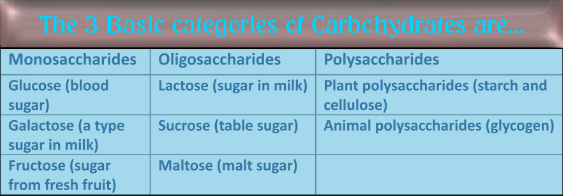
The two classifications of carbohydrates are simple and complex carbs:
Simple carbs:
Generally these come from sugars, such as glucose and fructose, often found in fruits and some veggies. These natural sugars in their raw form are healthy and fine to consume, but only in moderation, 'If you are specifically trying to lose weight'.
Lactose is another simple carb: this comes from milk or dairy products:
last would be Sucrose, this actually comes from sugar cane.
Other simple carbs can be found in refined foods and can be mixed in with other processed foods such as; different types of sodas, fruit juices, cookies, cakes candy and pastry.
The energy from calories burned, contained within simple carbs burns very fast, this energy blast that you receive is short-lived, often crashing when you come down from the high of the energy it's giving.
These calories are referred to as ‘empty calories’, meaning: they hold or have no real food value. Not good choices for sustaining weight training activity.
This crashing effect creates a boost in your blood sugar levels often creating an ‘insulin Spike’.
First: the biggest problem with this
energy source for most is: Excess food
cravings become almost unstoppable in their nagging nature.
Second: this causes most individuals to increase their caloric consumption of simple carbs instead of complex carbs-and so this cycle becomes (unbeatable and vicious), in terms of weight loss.
The introduction of these, refined sugars added to processed foods are where the enemy sits, if you consume them.
It is no accident that almost 20% to 25% of the total calories that are consumed come from these sources, this is very high. Excess calories from these sources can result in serious heart and health related issues later life.
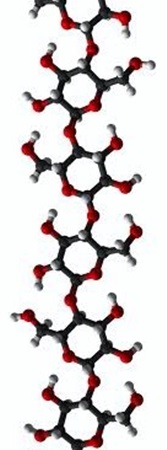
Complex carbs:
Are chains arranged of simple carbs, these are comprised of starches along with fibre. These can be found in plant-based foods often stored in the form of starch.
Complex carbs can be found in higher fibre whole wheat cereals, whole grain bread, including pasta, they can also be found in potatoes, yams, beans, nuts, vegetables, etc. for a more complete list of complex carbs.
Because of this complexity of how carbohydrates are formed into chains and the fact that they are unrefined, meaning: not reproduced or refined producing a slower calorie burn time with longer-lasting, consistent energy.
Let’s take some time to clarify how this information might help you in your weight training fat loss lifestyle as 60 to 70 %, of this lifestyle is nutritionally based.
Once you’ve ingested complex carbohydrates these are then broken down into glucose; most of the body’s cells depend on glucose, the production of glucose is what sustains the brain and nervous system.
If you don’t eat enough complex carbs your body will begin to convert protein to glucose. If this happens, this effect can put you in a ‘catabolic state’ and begins to use protein and glycogen stores from the muscles - (something you don’t want).
So ingesting enough carbs as you can see is important in weight training. Carbohydrates offer what’s known as a ‘thermogenic effect’...
This increases calorie burning and will cause your body to burn more calories becoming hungrier every 2 to 3 hours, (if your calories come from healthy complex-carb) sources.
Complex carbohydrates should make up 50 to 60% of your calories. 8 to 10 % of these calories can come from simple carbs such as fresh fruit and some vegetables etc.
Some refined sugars that can be found in whole-wheat muffins and bagels, etc., should be eaten sparingly...
this decreases low blood sugar levels and increases energy expenditure, if these are consumed sparingly throughout the day can help with the dreaded nighttime cravings and dieting stress, especially as the evening progresses.
Proteins And Their Place in Weight Training Fat Loss
It’s funny how carbohydrates seem to get all of
the media attention and spotlight, ‘carbohydrates’, to be sure - are the main
fuel source for the body,brain and central nervous system.
Other than water, protein is the most abundant nutrient in the body. But...
even though proteins do seem somewhat overshadowed by carbohydrates. They have an incredible place of importance within the body. Proteins themselves have 4 calories per gram as do carbohydrates. Your body simply cannot produce all the essential protein needed for the body.
Protein is actually a chain of linked units, these are called amino acids. As you ingest protein, the body begins to break apart the protein and split these into amino acids, these are then absorbed in the small intestine then reprocessed and put back into the bloodstream.
These newly arranged proteins carry out specific functions to maintain life; all living tissue is made up of 20 essential and nonessential amino acids.
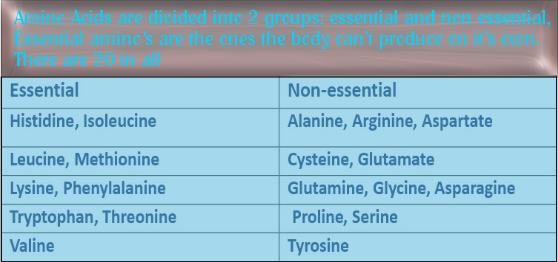
Essential amino acids: cannot be produced by the body, so these essentially have to be supplied through your diet and nutrition. Regarding weight training fat loss the essential amino’s are so important that you get them, from the right sources, and in the right quantities.
The body can do two primary things with protein calories; the body can put protein into fat stores, or use it as an energy source for functions vital to life.
Proteins are primarily responsible for the building and repair of many things within the body, for weight lifters; this means: increasing and strengthening the size and shape of lean body mass.
It is also responsible for the rejuvenation and repair of organs, bones, nails, hair, skin tissue, blood cells etc., as you can see their importance is great.
No Other 'Macronutrient' Gets Beaten To Pieces By The Media Than Fat
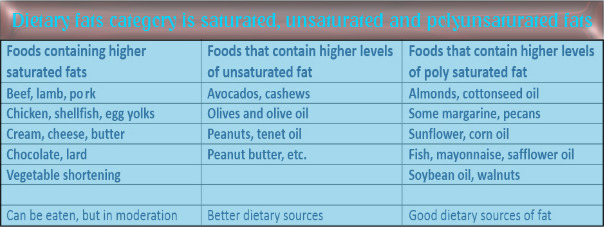
Lets uncover and show what Fats are:
including which ones can be eaten in moderation. 10 to 15% of your daily calories should come from healthier dietary fats.
Fats are the highest in calories and most energy dense:
Of the three macronutrients 1 g. of fat has approximately 9 calories; more than double of the other macros. Not only does fat have double the calories from that of other nutrients, these are also the slowest burning and usually the last to be used by the body.
1 pound of body fat is more than twice the size in volume from that of lean muscle tissue.
Being the densest nutrient, a pound of fat contains approximately 3,500 calories as opposed to 1800 calories stored in a pound of protein or carbohydrate. Fat molecules differ chemically in there composition, these being saturated, unsaturated or polyunsaturated.
The fats in your body serve three basic functions.
1: they provide the major source of stored energy.
2: fats also act as an insulator conserving body heat and protecting against excessive cold weather.
3: they also protect and cushion the major organs of the body.
The Facts On Harmful Dietary Fats
Saturated fat:
Found mainly in animal food sources these can be seen in red meat, poultry and full fat dairy products. Saturated fat raises total blood cholesterol levels and low density lipoprotein (LDL) cholesterol levels, which can increase the risk of cardiovascular disease.
Trans fat:
This type of fat occurs naturally in some foods in small amounts. Most trans fats come from oils through food processing methods called partial hydrogenation.
Through this process, these oils become easier to cook with and less likely to spoil.
Research has shown: trans fats can increase unhealthy LDL cholesterol, and lower healthy, high density lipoprotein HDL-cholesterol, which can increases the risk of cardiovascular disease, (not a healthy choice).
Reading labels to make healthier choices protects you against risk of making poor choices towards your weight training fat loss goals.
The Facts On: Healthier Dietary Fats

Unsaturated fat:
Unsaturated fats are more commonly found in oils and plants; these fats stay in liquid form at room temperature. For the most part, the fats found in these oils and plants make up the essential fats the body needs.
Because this is the last nutrient to be digested and leave the stomach, this supplies a sense of satisfaction after eating. Fat is then broke down even further from here and dispersed.
This is called emulsification; shortly after a few more processes of breaking down fat, this process continues and is then either stored as future energy, or used as immediate energy.
Polyunsaturated fat:
As mentioned above this type of fat that is predominantly found in plant-based foods and oils, eating foods rich in polyunsaturated fats has shown to improve blood cholesterol levels: which can decrease your risk of heart disease and may even help with type 2 diabetes.
Omega-3 fatty acids:
Omega-3’s are found in fish, such as: anchovies, herring, mackerel, sardines, trout, tuna etc. recommended weekly dosage is 2 to 3 times. Omega-3’s also appear to decrease the risk of coronary heart disease.
And yes, you are finished on the whole protein, carbohydrates and fats issue on the weight training fat loss page.
Sorry, I don’t mean to be long-winded and boring, the intention here is to help you see and evaluate the facts and apply them to your food choices and eating habits.
Applying Simple Mathematics to Calorie Expenditure to Control Weight
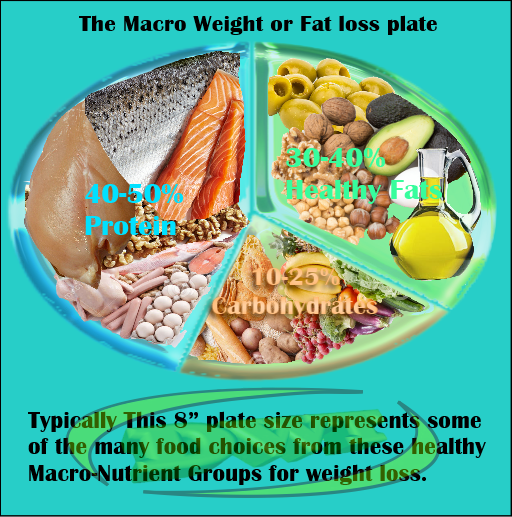
Ultimately, this is where simple mathematics of weight training fat loss will come into play. If you ingest more calories from highly processed foods than you expend or burn off, These calories will be stored on you!
This is not unlike the interest you see in your savings account accumulating on the principle of what you put into your local bank. If you eat too much or have a sedentary lifestyle or both, this will accumulate in a negative way.
The only way that you can change this equation and create equal values, or even better, a small deficit in calories being stored is: carefully know and understand proteins, carbohydrates and fats, and what percentage to place each of these at on your plate, when you eat each day.
learn and get better at reading food manufactures labels; include a good aerobic and weight training weight loss routine to coincide with it and this will change the look of your physique over the course of next several months.
Try not to be in a hurry, be patient with yourself especially; if you’re not conditioned, I assure you, if you’re persistent, progressive and continue to add intensity you will improve.
North America has an obesity problem, learning to define and understand the different fats and there dietary sources...
Information from the American Medical Association and stats Canada, reports that overweight and obesity is now at 64% in the US, and Canada at a close second at 58%. This figure is staggering to say the least. This is over half of our national populations.
Letting It All Sink In
Let it sink in, take a break for a few days, come back and re-read if you need to, it doesn’t matter. Before long, it will begin to make more sense: use weight training to promote fat loss until self improvement or goal related results are achieved.
Don’t get caught up in numbers games of; how many calories you should be burning, or what’s the number on the weigh scale...

These are not as important as making a plan towards a goal that’s going to
involve getting You into better shape and losing some unwanted weight.
Above everything, have fun doing it! Add variety and spices to your cooking and the same goes for your weight training. This will help ensure that your enjoyment continues along with your success in turning this into a lifestyle.
A solid healthy diet takes precedence over everything, no different than clean gas for your car. What is on the end of your fork always decides how you're going to look. With that in mind; diet and weight training are both parts of each other and closely related...
The article would become too large and overpowering to explain both, so… What I have done is: I have designed a page that specifically targets weight training exercises to scorch body fat for women.
Push yourself towards your weight training fat loss dream and Believe, believe in yourself like never before. Fortify this belief by writing it down...
repeating it to yourself every day at work, In school, on your coffee break, with your friends, when your weight training or eating. Never give up: use your courage to push your fears out of the way and go after what you dream to believe in.
Summon your motivation and determination. This is where you will truly find yourself, this is where your dreams are born, don't let the icy-grip of fear sneak into your the cracks of your armor (step out of your comfort zone)... because this is where fear melts away... and goals become realized.
Good luck DWT.



